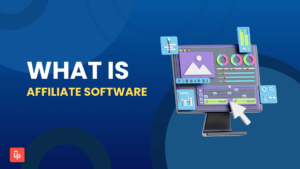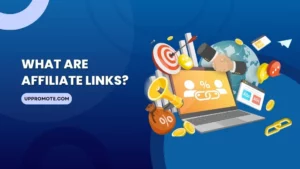Affiliate marketing is one of the most powerful ways to boost sales and brand awareness. However, many business owners—especially those new to this strategy—often struggle to see desired results because of common affiliate marketing mistakes.
Whether you’re just launching your affiliate program or looking to improve an existing one, avoiding these pitfalls can help you build stronger partnerships with your affiliates and maximize revenue.
In this article, we’ll delve into the 14 most common affiliate marketing mistakes and how to avoid them. We’ll also include real-world examples to show how businesses overcome these challenges and run successful affiliate programs.
Let’s jump in and look at the most common affiliate marketing mistakes to watch out for:
- Setting Unclear Goals for Your Affiliate Program
- Overlooking Competitive Analysis
- Choosing the Wrong Affiliates
- Relying on a Single Channel to Find Affiliates
- Offering Uncompetitive Commission Rates
- Making the Affiliate Sign-up Form Complex
- Failing to Set Policies and Agreements
- Skipping Affiliate Training
- Failing to Communicate with Affiliates
- Delaying Affiliate Payments
- Lacking Promotion and Incentives
- Failing to Measure Program Performance
- Overlooking Fraud Prevention
- Neglecting Legal and Compliance Issues
To avoid these mistakes and succeed in affiliate marketing, you need the right partners and tools in place. Among these, reliable affiliate management software is especially important. It helps you track clicks, sales, and commissions accurately, making it easier to measure performance, prevent fraud, and manage affiliates effectively.
Are you searching for an affiliate tracking app you can trust? UpPromote, the #1 affiliate management software with a 4.9/5 rating and over 4,000 reviews on the Shopify App Store, is worth exploring.
Join 115,000+ UpPromote users and take full control of your affiliate program to achieve the best results without errors.
14 Common Mistakes in Affiliate Marketing and Tips to Avoid
Winning in affiliate marketing isn’t easy, especially with 8 out of 10 brands already in the game. Making any mistakes when setting up, running, or managing your affiliate program can cost you time and money—and give your competitors a chance to get ahead.
Ready to find out what’s holding your affiliate program back? Here are 14 common mistakes and tips to avoid them:
1. Setting Unclear Goals for Your Affiliate Program
Seeing many brands, including your competitors, using affiliate marketing might make you want to rush in.
But, launching an affiliate program just to ‘get more leads,’ ‘boost sales,’ or ‘improve brand visibility’ without a plan can leave you stuck and unsure of what to do next.
When your goals are too vague, it’s like heading out without a map. Here’s what can happen:
- Wasted resources: You might spend time and money in ineffective places, leading to poor results.
- Hard to track progress: Without clear objectives, it’s tough to tell if your program is on the right track or needs adjustments.
- Challenging to improve your campaign: If you don’t know what’s working or what’s not, making changes and optimizing performance gets tricky.
What you can do to avoid
Before starting your own affiliate program, think carefully about what you want to achieve with it.
Don’t keep it too broad. Use the SMART model to set specific, actionable goals. It stands for Specific, Measurable, Achievable, Relevant, and Time-bound.
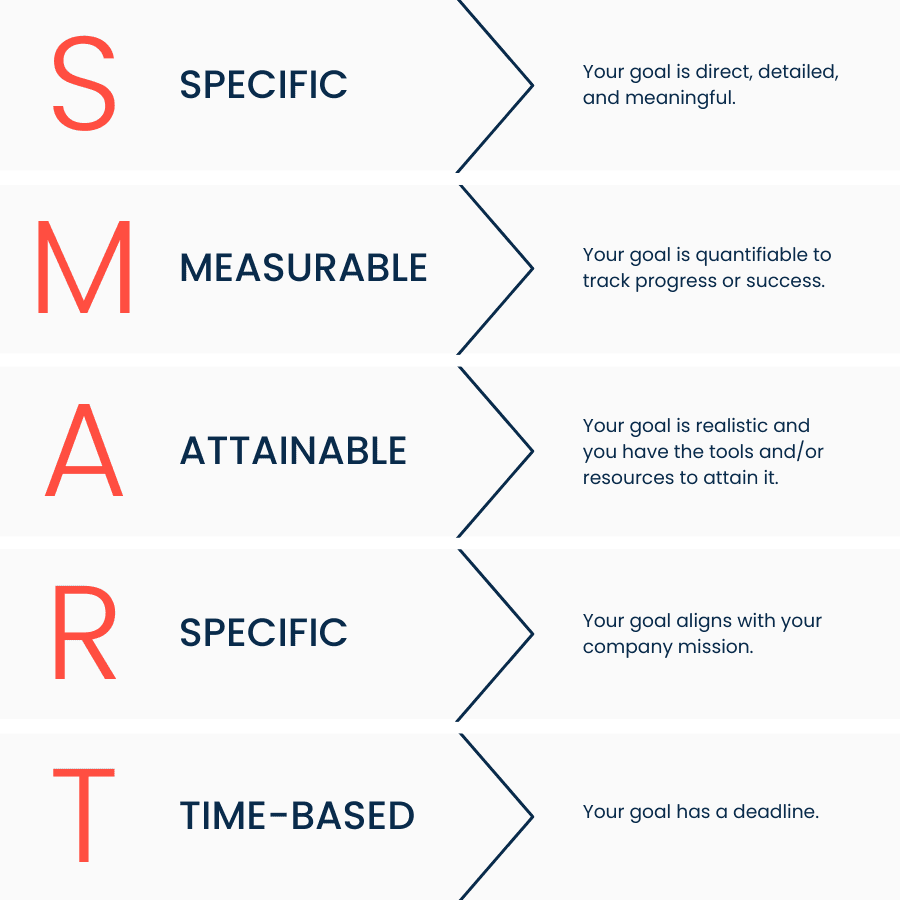
For example:
| Overall goals | SMART goals |
| Get more sales | Aim for X% sales growth in 2 months by collaborating with Y influencers. |
| Increase website traffic | Boost traffic by X% in 3 months through partnerships with Y bloggers. |
| Boost brand visibility | Increase brand mentions by X posts on social media through Y influencers within 1 month. |
Next, break your objectives into smaller steps with weekly or monthly milestones. Don’t forget to set performance metrics (KPIs) to track how well your affiliate campaign meets its goals.
Common KPIs for affiliate marketing programs include:
- Clicks and traffic
- Number of affiliate sales
- Conversion rate
- Revenue from affiliate marketers
- Average order value (AOV)
- Return on investment (ROI)
- Customer lifetime value (CLV)
2. Overlooking Competitive Analysis
Researching competitors’ affiliate programs takes time and effort, so it might feel easier to skip it and jump straight into launching your own. But that could be a big mistake.
Affiliate marketing is highly competitive, with thousands of brands in a single niche. Also, affiliates always compare programs before deciding which ones to promote.
If you fail to analyze what your competitors are doing, you risk missing key opportunities and creating ineffective strategies—such as offering uncompetitive commission rates, lacking incentives, or using outdated promotional materials. As a result, affiliates may choose to work with your competitors instead.
What you can do to avoid
Conducting an affiliate program competitive analysis within your industry before your campaign’s launch is the solution. Here’s how:
- Look at the types of competitors’ affiliate partners they work with.
- Study your rivals’ affiliate programs in detail. Look at their commission structures, bonuses, payout schedules, marketing materials, and more.
From there, figure out what affiliate marketing strategies you can learn from them and what tactics you can use to make yours stand out.
3. Choosing the Wrong Affiliates
Does having affiliates onboard mean your program will succeed? Not really. Once your program is live, it’s tempting to rush and recruit as many affiliates as possible, thinking more affiliates will mean more sales.
But here’s the thing—focusing on quantity instead of quality can backfire. You might end up working with affiliates who don’t fit your brand, target the wrong audience, or don’t share your business goals.
Here’s what can happen with the wrong affiliates:
- They target irrelevant audiences: If their followers aren’t interested in your products, you’ll see low conversions.
- They hurt your brand image: Misleading or spammy promotions can damage trust and credibility.
- They waste your time and money: Managing affiliates who don’t deliver results drains your budget without bringing in actual returns.
What you can do to avoid
To find the right partners for your brand, don’t skip the vetting process.
Whether you invite affiliates or they come to you, review their applications and backgrounds. This ensures you add the best fit to your program.
Here’s what to focus on:
- Niche fit: Affiliates in your industry can create better promotional content for your target audience.
- Audience match: Define your ideal customer— their age, location, and interests. Then, choose influencers, content creators, or bloggers whose audience matches with yours.
- Past experience: Check which brands they’ve worked with and how they promoted them.
- Content quality: Check their posts and videos. They should be high-quality, original, and engaging.
- Engagement rates: Look beyond follower numbers. Review likes, comments, shares, and interactions to gauge whether the affiliate’s audience is active and responsive.
Bonus tips: Ask affiliates to share their websites and social media in their applications, just like Pure Dixie does.
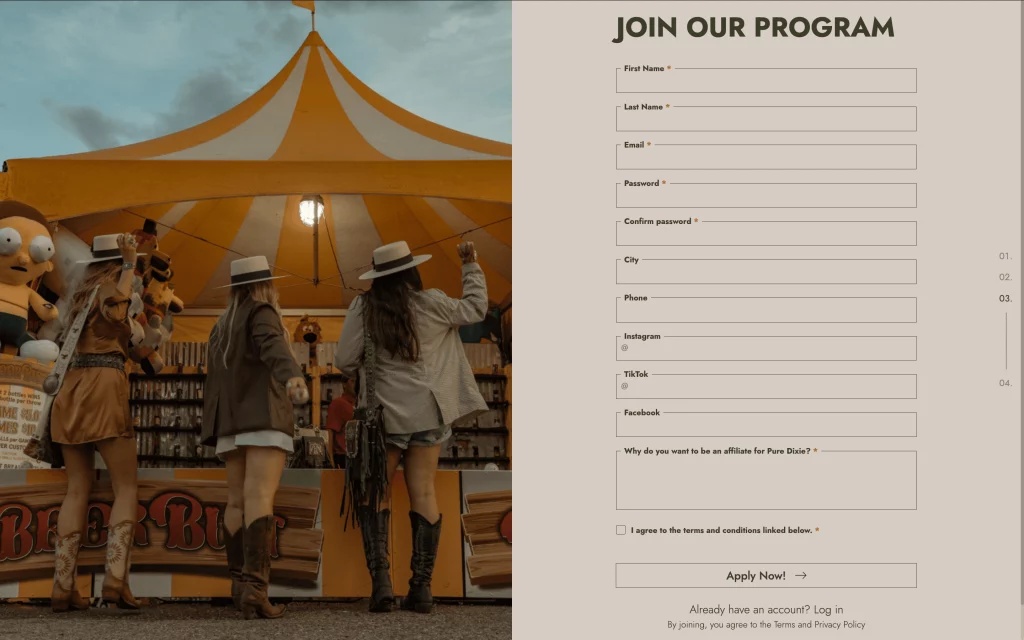
4. Relying on a Single Channel to Find Affiliates
Many business owners are used to working with influencers, bloggers, or ambassadors. As a result, they often stick to one platform or method—like social media or affiliate networks—when looking for partners.
Why is this a problem?
- Limited reach: A single channel limits your options. It makes it harder to attract affiliates with different styles and audiences.
- High competition: Popular platforms like Instagram and TikTok are crowded with brands competing for the same top affiliates.
What you can do to avoid
Here’s something interesting—affiliate marketers come in different forms. They can be bloggers, social media influencers, review sites, coupon and deal sites, podcasters, and more.
So, don’t limit yourself to one channel. Promoting your program across multiple platforms increases visibility and helps attract different types of affiliates who can scale your brand’s reach and bring in new customers.
You can combine multiple ways to find them effectively. For example:
- Promote your affiliate signup page on your website and social media. Think about running ads to attract potential partners to sign up.
- Join reputable affiliate networks like ShareASale, Commission Junction, Rakuten Marketing, and UpPromote Marketplace. These networks have large pools of active affiliates ready to connect.
- Convert your happy customers into brand advocates. Consider setting up a refer-a-friend program to do just that.
- Research on Google and social media (Instagram, LinkedIn, TikTok, X, Quora, Pinterest, etc.) using keywords related to your niche and products. These strategies can help you quickly find bloggers and influencers specific to your industry.
- Attend events and conferences associated with your field or affiliate marketing (Affiliate Summit West/East, Affiliate Huddle, etc.). These events are great for networking and meeting potential affiliates.
5. Offering Uncompetitive Commission Rates
Simply put, your affiliate offer is lower than industry standards or less attractive compared to competitors. This can make it hard to attract top-quality affiliates—and worse, it might even push your current partners to leave for brands that pay better.
Why does this happen?
- Skipping competitor research: If you don’t know what others offer, you might set lower commissions without realizing it.
- Focusing too much on profits: Trying to protect margins might lead to commissions that don’t excite affiliates.
- Playing it too safe with budgets: Being afraid to spend more can stop you from offering competitive deals.
What you can do to avoid
You are in business, so your affiliates. They work with you to earn money by promoting your products.
So, at the end of the day, money talks. It is wise to offer appealing, competitive commission rates. They should beat rivals’ programs that attract the same affiliates. Let’s make it simple: you reward affiliates for promoting your products, and in return, you get more sales.
To make sure your commission rate is as good as your competition, or even better than them, here are some things you can do:
- Research the average rates within your niche and analyze commission rates offered by your direct competitors before finalizing your decision. You can take a look at our survey below:
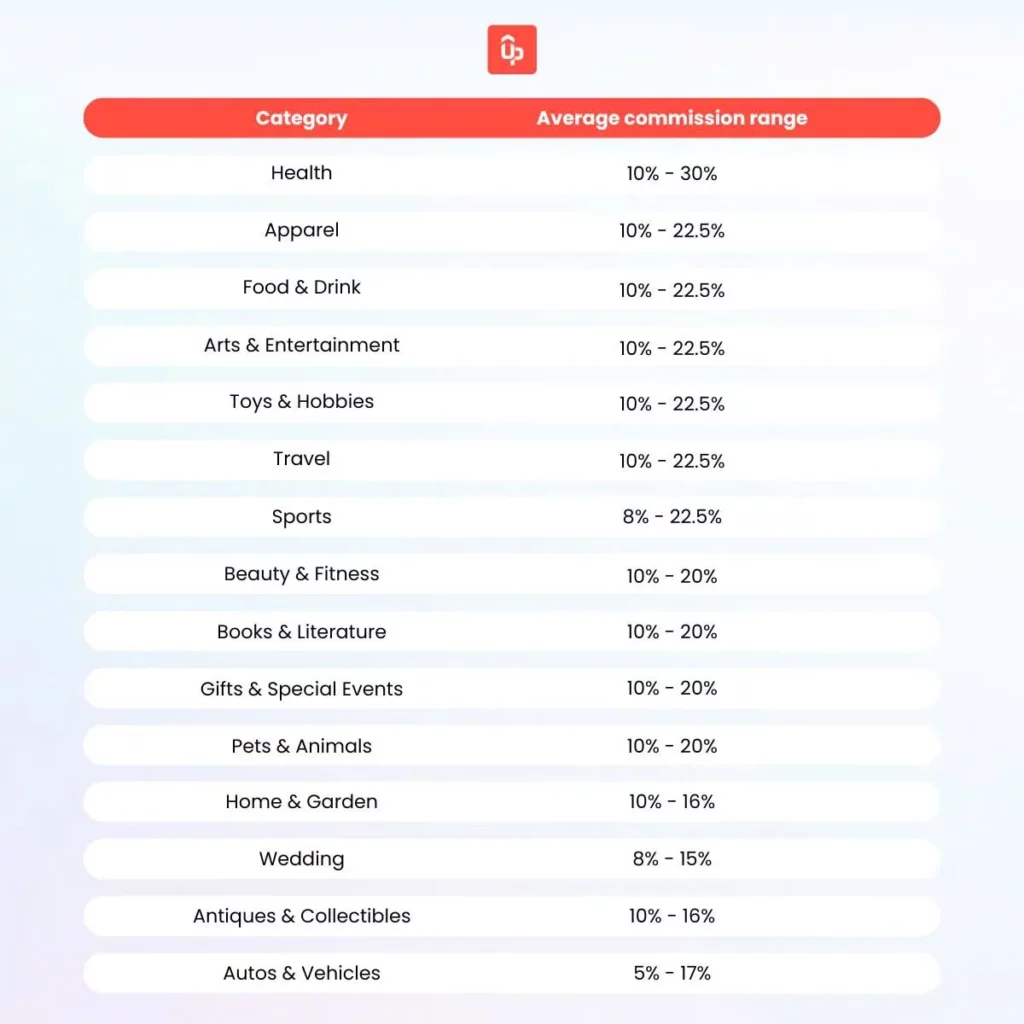
- Think about offering tiered commissions. This means giving higher rates to those who hit bigger sales milestones. Tréskin, for example, used UpPromote to create a 4-level structure with commissions from 15% to 35%. This approach brought in top beauty bloggers and influencers, helping the brand make over $120,000 in affiliate revenue in just one quarter.
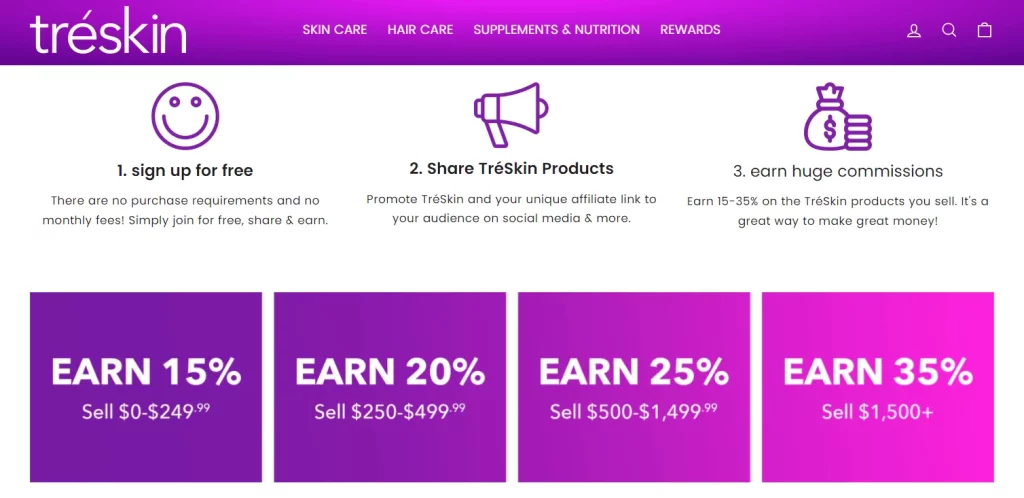
Join 115,000+ UpPromote users to create smart commission structures that outshine your rivals.
6. Making the Affiliate Sign-up Form Complex
As an affiliate manager, it’s important to screen affiliates to ensure they fit your brand. But a long or complicated signup form can turn them away. It might make them feel overwhelmed or think your program is too hard to join, which hurts your recruitment efforts.
Common mistakes include:
- Asking for too much info upfront, like personal details, tax forms, or business docs, before granting access to the program.
- Using poorly designed forms with unclear instructions, confusing layouts, or unnecessary fields.
What you can do to avoid
Simplifying the affiliate registration form is a great solution. Only ask for essential details, such as name, email address, website or social media link, and PayPal or bank details for payments. Keeping the process as easy as 1-2-3 encourages affiliates to complete the signup process.
For inspiration, check out how Fiore di Perle—a brand offering luxury, handcrafted pearl-adorned accessories and jewelry—used UpPromote to design its affiliate landing page. The page features a simple, easy-to-fill signup form while clearly displaying program benefits, making it easy for affiliates to apply.

Want to design a functional yet straightforward and beautiful registration form like Fiore di Perle? Discover and utilize affiliate signup form templates on UpPromote to tailor your own.
Create a well-designed affiliate signup page to boost affiliate signups with UpPromote —quick, easy, no coding needed.
Our system provides you with 3 flexible options:
- The Basic Template
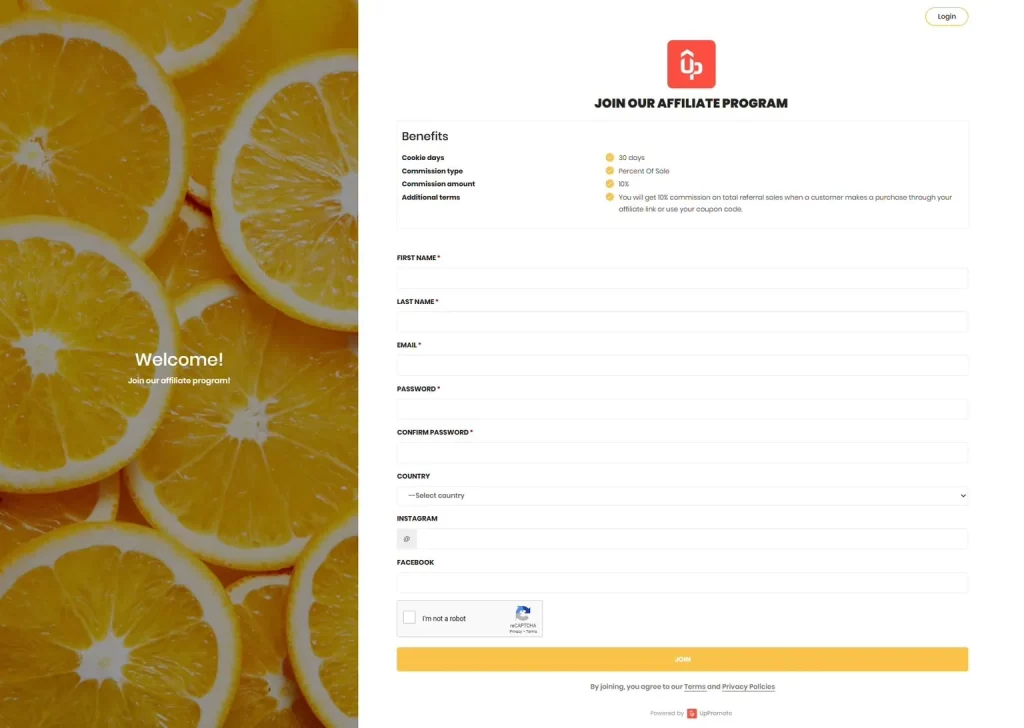
- The Trendy Template
- The Comfort Template

7. Failing to Set Policies and Agreements
Many business owners, especially those new to affiliate marketing, often overlook the importance of detailed policies and agreements. Lacking experience or resources, they may create overly simple rules or skip them.
Without clear terms, the following issues can arise:
- Affiliates might promote products in ways that harm the brand’s reputation, using misleading claims, spamming, false advertising, or clickbait.
- Disputes may arise over undefined commission rates, payout schedules, or eligibility criteria.
- Merchants could be liable if affiliates fail to follow rules like the FTC and GDPR.
What you can do to avoid
If you want to create clear and detailed affiliate terms and conditions, it’s a good idea to consult a legal expert or lawyer. They can review your agreement and make sure it meets all the legal requirements for your business. While this may require time and resources, it is a worthwhile investment to define the roles and responsibilities of your business and your affiliate partners, protecting your brand in the long run.
When writing your affiliate agreement, don’t forget to cover these key points:
- Program rules: Who can join, how to sign up, and what their responsibilities are.
- Marketing guidelines: How affiliates can promote your brand and what materials they can use. Also, what is not allowed, like spamming or misleading ads.
- Commission structure: How commissions will be calculated and paid out.
- Referral tracking: How referrals will be tracked, including your cookie policy.
- Legal components: Key details like confidentiality, ownership rights, and how to end the agreement.
8. Skipping Affiliate Training
When you bring affiliates on board, it’s natural to want them to start promoting your brand right away so you can see results quickly. You might think that experienced affiliates already know how to market your products, so you skip training to save time.
But skipping this step can lead to problems. Affiliates might not fully understand your product, your audience, or what your brand stands for. Without the right guidance, they could use inconsistent messaging or visuals, which can confuse customers, hurt your brand image, and make it harder to drive leads or sales.
What you can do to avoid
A thorough training process is essential. It helps your partners grasp the rules, products, and brand values. Then, they can promote your business more effectively and consistently.
Here’s what you can think about:
- Provide a comprehensive welcome kit that includes product details and unique selling points (USPs).
- Share brand guidelines, such as logos, color schemes, and tone of voice.
- Offer clear instructions on accessing affiliate dashboards and tracking tools.
- Develop training resources. These include: video tutorials, product webinars, FAQs for common questions, and pre-made marketing materials (e.g., banners, email templates).
If you use UpPromote, you can easily provide affiliates with a detailed guide as soon as they join.
You can upload videos, notes, or announcements to the Guide page in just a few minutes.
Once approved, affiliates can access all the information they need directly from the Guide tab in their affiliate dashboard.
 9. Failing to Communicate with Affiliates
9. Failing to Communicate with Affiliates
Simply having affiliates doesn’t guarantee your program’s success. Keeping them engaged, motivated, and supported plays an important role in achieving great results—and good communication can help make that happen.
But, many business owners find it hard to stay in regular, clear contact with their affiliates. They often focus on other things, like recruiting new partners or launching products, which can lead to:
- Affiliates are unaware of current promotions, product updates, or brand messaging. As a result, they promote outdated content and run ineffective campaigns.
- Affiliates feel ignored or unsupported, making them less likely to stay active or committed to your program.
What you can do to avoid
To communicate effectively with your affiliate marketers, set aside time to stay in touch and stay updated on their promotional activities. While the schedule is up to you, keep these points in mind:
- Be available and respond quickly to any questions or support requests from your affiliates.
- Keep your affiliates informed about your program updates, new collections, and upcoming promotions.
- Ask for suggestions or collaborate with affiliates to brainstorm better ways to promote your products.
- Provide personalized feedback to each affiliate. Highlight their strengths and suggest areas for improvement.
- Reach out regularly via email, messaging, or calls. Check for issues and offer help, especially if an affiliate seems less active.
- Show appreciation for your affiliates’ achievements with a heartfelt thank-you, performance bonuses, or public recognition.
With UpPromote, communicating with your affiliates is simple. You can choose from two options to connect with them:
- In-app chat: Chat directly with affiliates within the app and send them private messages.
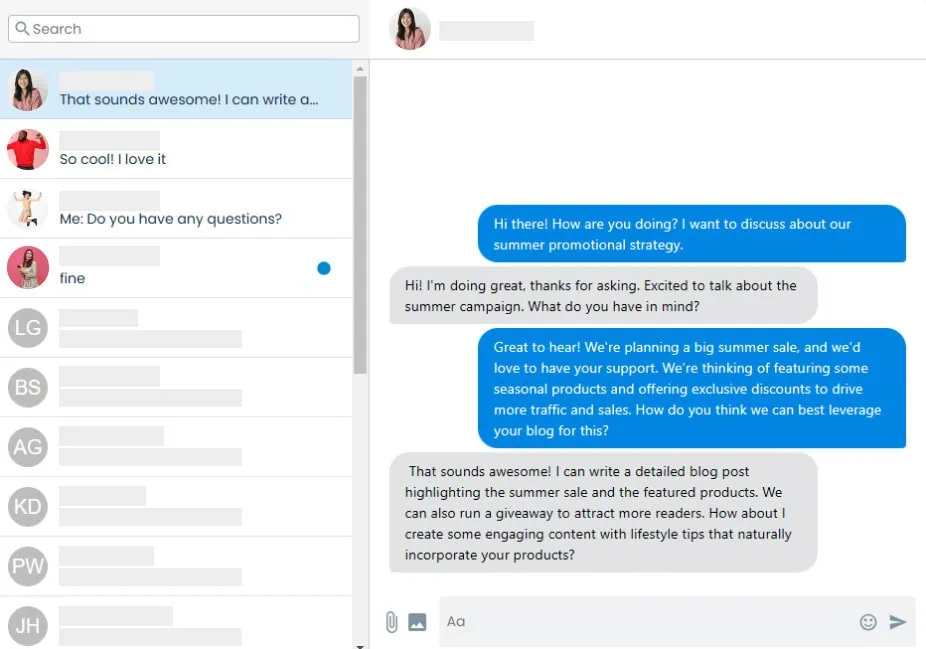
- Email: Use customizable templates to quickly reach a larger number of partners. Send mass emails to update all affiliates about changes to your campaign.
 10. Delaying Affiliate Payments
10. Delaying Affiliate Payments
Commissions are like an affiliate’s salary, so it’s natural for them to expect accurate and timely payments as per the agreed schedule. If there are mistakes in the amounts or delays in payment, it can break their trust and hurt your program’s reputation.
Some common reasons for payment problems could be:
- Using manual processes to calculate and handle commissions can lead to errors.
- Not having enough cash flow to pay affiliates on time, especially during busy sales periods.
What you can do to avoid
To ensure that you send commissions to their partners smoothly and on time, consider the following points:
- Use affiliate management software to automate commission calculations and payouts.
- Ensure sufficient cash flow to meet payment obligations, especially during peak sales.
- Inform affiliates of payment schedules and any delays to manage expectations.
- Support various payout methods, like PayPal, bank transfers, or digital wallets. Avoid reliance on a single solution to reduce risks from operational issues.
- Set affiliate minimum payment thresholds to minimize the frequency of small transactions and encourage your partners to generate more sales to reach the required commission amount to receive their earnings.
With UpPromote, you can pay affiliates your way without worry. Our app supports you in automatically calculating affiliate commissions and collecting affiliates’ payment details for easy sending payouts.
And the best part? You can easily schedule auto-payments with PayPal. Select the payment date or cycle according to your needs to ensure consistent and on-time affiliate payouts.
You can also set flexible payout thresholds to suit your financial goals. Define a minimum commission to ensure affiliates reach a specific amount before payouts. Additionally, set a maximum payout limit to help you stay within budget.
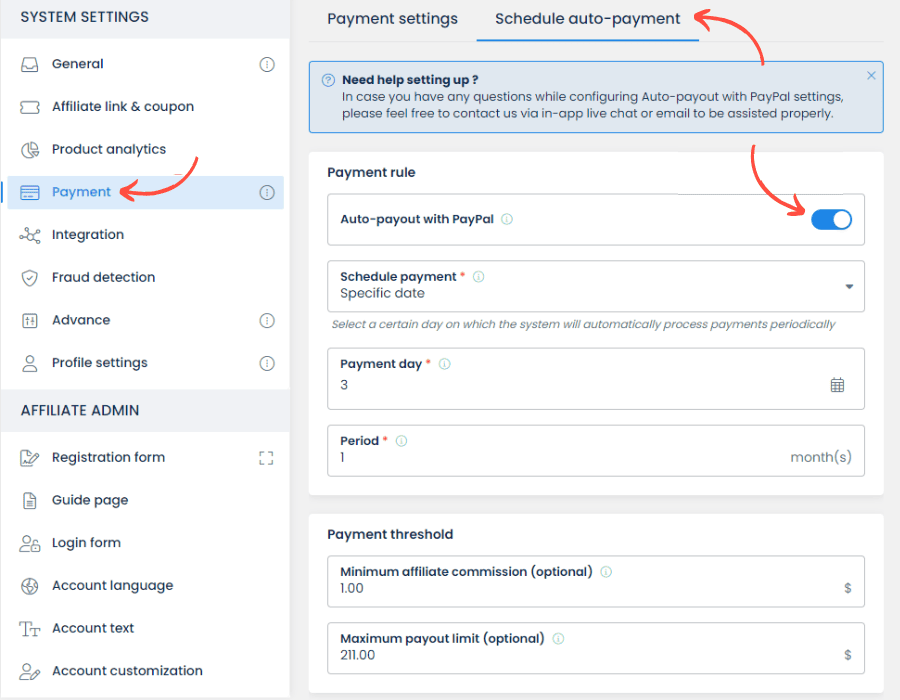
Easily schedule automatic payouts to your partners via PayPal—no more manual work, and you’ll never miss a payment to your affiliates again.
11. Lacking Promotion and Incentives
You might think affiliates work with you just to earn commissions, so offering them a reasonable rate should be enough. But in the competitive world of affiliate marketing, that’s rarely the case.
Without anything beyond the standard commission, affiliates may feel unmotivated to promote your brand actively. And let’s be honest: potential affiliates compare programs. The ones offering exciting bonuses or incentives tend to stand out, while programs that don’t reward their efforts or recognize their contributions often fail to retain them.
What you can do to avoid
Go beyond standard commissions. Create strategies to motivate and reward your affiliates for their efforts. Here are some ideas to try:
- Offer performance bonuses to affiliates for hitting sales milestones. For example, a $100 bonus for generating $1,000 in sales within a month.
- Run contests and reward winners with exciting prizes like gift cards, free products, or cash to boost affiliate engagement.
- Raise commission rates during high-sales periods, like holidays or product launches, to boost sales.
- Provide exclusive discounts or limited-time offers for affiliates to share with their audience, helping them attract more customers and boost purchases.
If you use UpPromote, you can easily keep your affiliates motivated and engaged by:
- Rewarding top partners with the Bonus feature. With just a few clicks, you can create customized affiliate bonuses with clear rules and conditions.
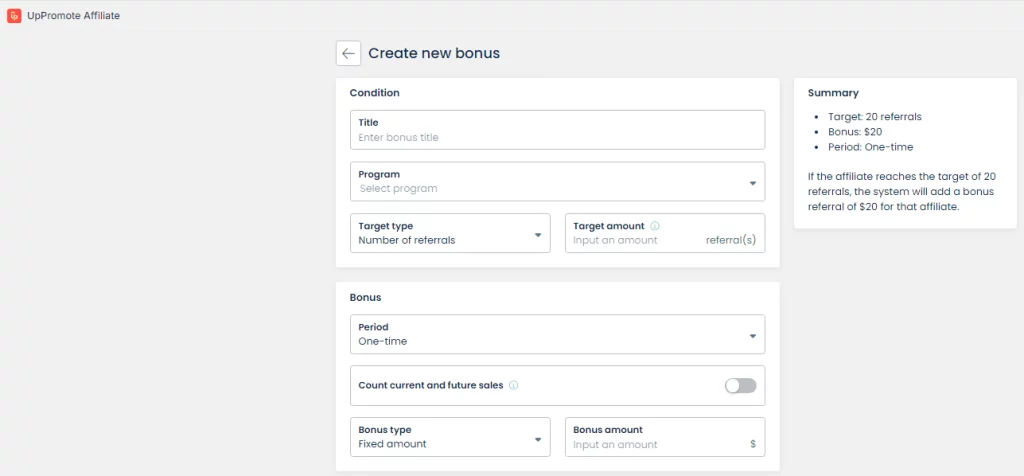
- Sending surprise gifts to affiliates who perform well using the Gift feature.
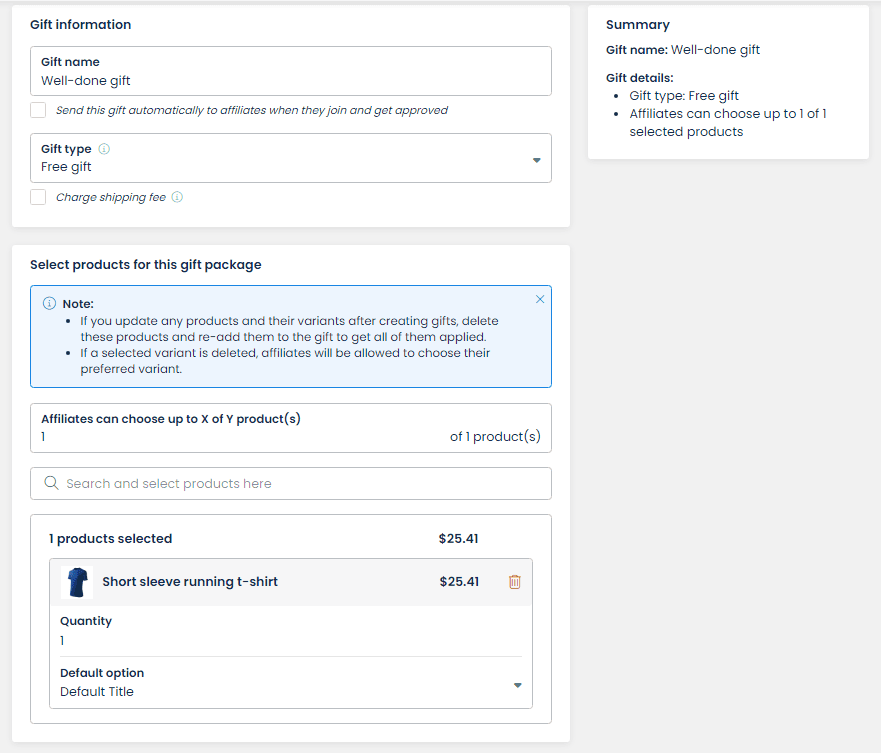
- Creating affiliate discount codes and assigning them to specific ones. Simply set up details like the coupon name, discount type, value, and usage limits.
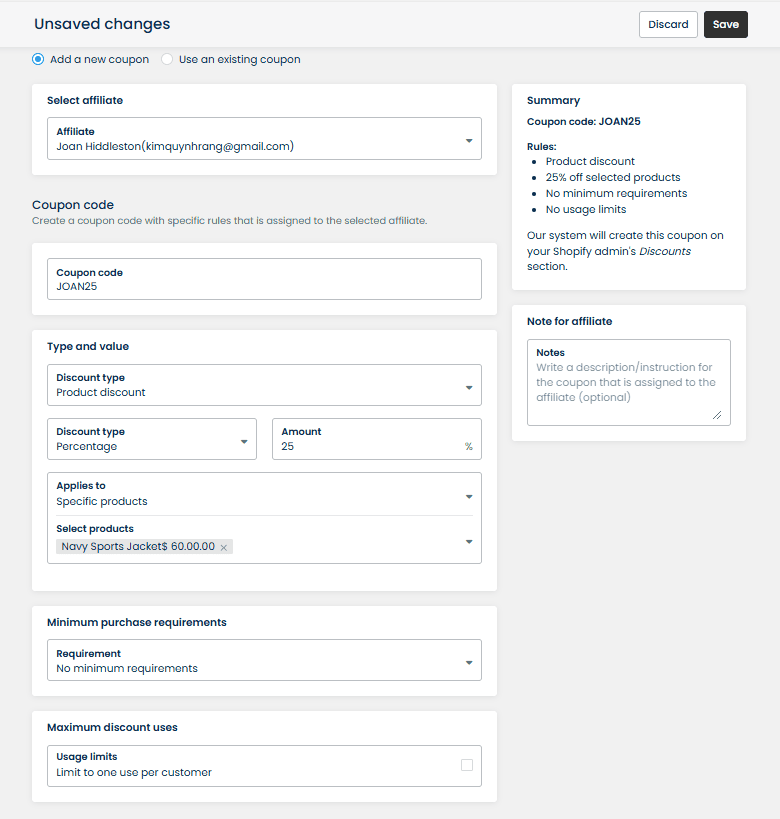 .
.
Hit two birds with one stone- Generate exclusive coupon codes that excite both affiliates & customers with UpPromote.
12. Failing to Measure Program Performance
Launching an affiliate program and bringing affiliates on board is just the first step. To really grow your campaign and boost your sales, you need to keep a close eye on how your affiliates are performing and constantly look for ways to improve.
If you don’t set clear goals (KPIs) for your campaign, you won’t know what success looks like or how to measure it. Without a good tracking system, keeping track of your affiliates manually can take a lot of time, result in inaccurate data collection, and make it harder to analyze and optimize your campaign.
What you can do to avoid
Besides setting clear goals and specific KPIs for your affiliate program, as mentioned above, you need to use a reliable affiliate tracking solution that automatically tracks affiliate performance, provides real-time data, and delivers comprehensive reports and analytics.
With UpPromote, keeping track of your affiliate program’s performance is straightforward. The platform provides key metrics such as the number of affiliates, orders, sales, clicks, and commissions. Everything is presented in clear, easy-to-read graphs, allowing you to understand and analyze your program’s results quickly.
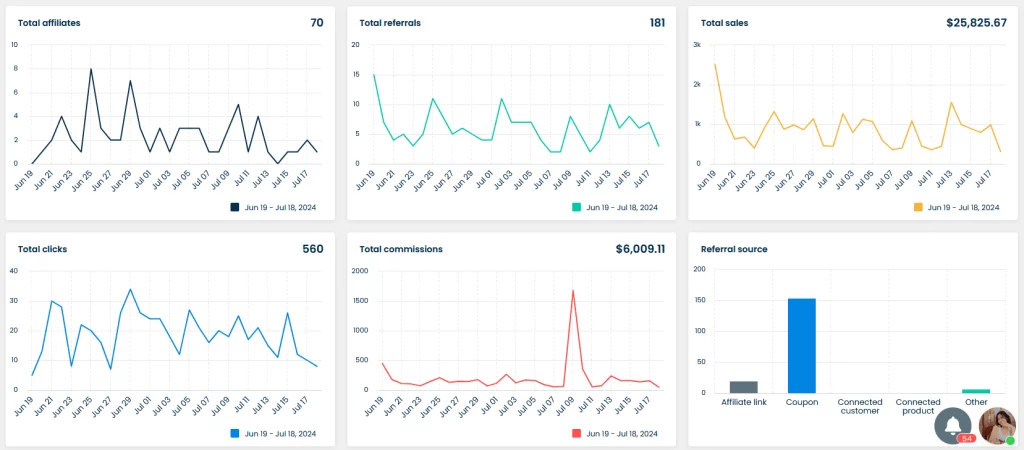
13. Overlooking Fraud Prevention
As an affiliate manager, here’s something you should know: Affiliate fraud is a major that costs businesses billions every year. In 2022, CHEQ, a top cybersecurity company, found that 17% of all affiliate traffic was fraudulent, causing businesses to lose about $3.4 billion.
So, this means if you ignore this, you could face problems like:
- Paying commissions for invalid leads, clicks, or sales that bring no real value to your business.
- Vulnerable to spammy tactics, misleading ads, or unethical practices from affiliates, which can damage your brand’s credibility.
- Viewing inflated metrics caused by fraud makes it difficult to evaluate your program’s true effectiveness.
What you can do to avoid
To prevent affiliate fraud and protect your program from scams, keep these tips in mind:
- Define program rules, banned practices (e.g., misleading ads, spam), and penalties for violations.
- Monitor affiliate data closely. Look for unusual spikes and cross-check information to identify suspicious activity.
- Use fraud detection tools to flag issues like cookie stuffing or invalid clicks.
- If fraud is detected, take action to minimize further damage. This could include withholding commissions, imposing fines, or removing the affiliate from your program. Consider seeking legal advice to ensure the appropriate response.
With UpPromote, our system makes it easy to control and secure your affiliate program against scams with its built-in fraud detection feature.
Here’s what UpPromote brings to the table:
- Spot and block fraudulent signups or referrals from suspicious IP addresses.
- Prevent certain affiliates from joining your program.
- Reject referrals coming from suspected IP addresses.
- Keep your affiliate registration form hidden from search engines.
- Limit affiliate registrations to specific countries or regions.
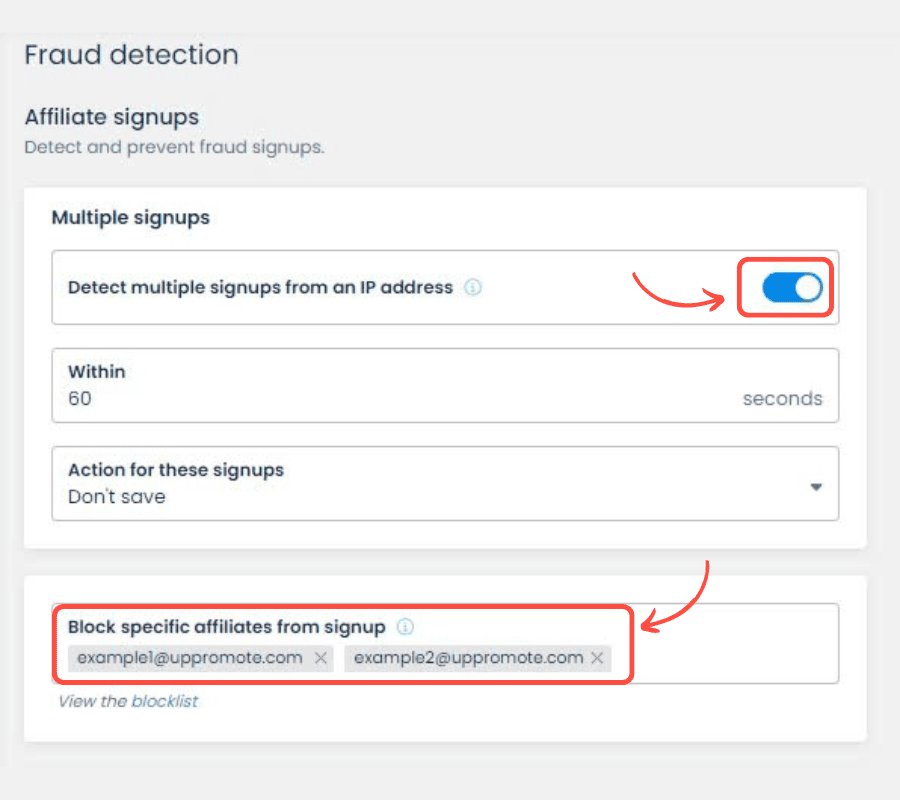
14. Neglecting Legal and Compliance Issues
Another mistake to watch out for is failing to comply with legal and regulatory guidelines. This often happens without meaning to—maybe because of a lack of experience, unawareness of the legal requirements for affiliate marketing, or limited resources to manage compliance properly.
Ignoring legal and compliance issues can lead to serious problems, such as:
- Fines or lawsuits: Breaking advertising, privacy, or tax laws can result in costly penalties.
- Damage to your brand’s reputation: Legal trouble can hurt your credibility, making it harder to earn the trust of affiliates and customers.
- Affiliate disputes: Without clear agreements, misunderstandings or conflicts can arise, straining relationships with affiliates.
What you can do to avoid
To address legal and compliance issues effectively, consider seeking advice from legal professionals. They can help ensure your affiliate program and agreements follow the rules and keep you out of trouble. Here are some key steps you can take:
- Write clear terms and conditions that cover sign-up, affiliate responsibilities, promotion rules, commissions, payments, confidentiality, ownership rights, and termination.
- Follow privacy and advertising laws, such as GDPR in the EU, CCPA in California, and FTC guidelines in the U.S., to maintain transparency and avoid penalties.
- Clarify tax obligations and require affiliates to provide necessary forms, like W-9s in the U.S. or equivalents in the EU.
Besides that, think about using an accounting or affiliate management tool to handle taxes and invoices. It can save you a lot of time and make dealing with paperwork much easier.
With UpPromote, managing taxes and invoices is hassle-free.
You can choose whether you or your affiliates will handle the taxes, depending on what works best for your business. Just input the tax rates based on local laws, and the system will automatically calculate payouts for you—no manual work is needed.
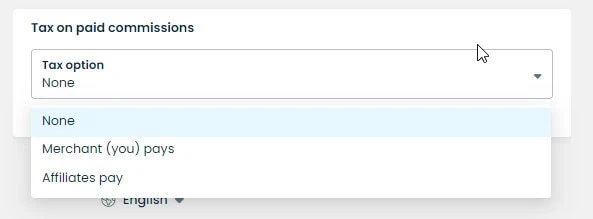
UpPromote simplifies invoicing with its Export Invoice feature. Whether you need a standard format or an EU-specific one, our system has everything ready. Both you and your affiliates can easily download invoices for completed payouts.
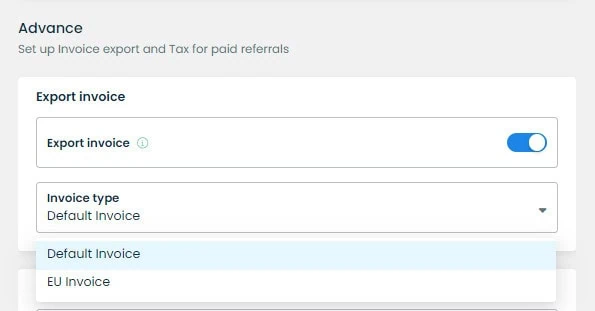
Every invoice contains all the essential information: Invoice ID, payment method, payment details, payment amount, affiliate name, and referral details.
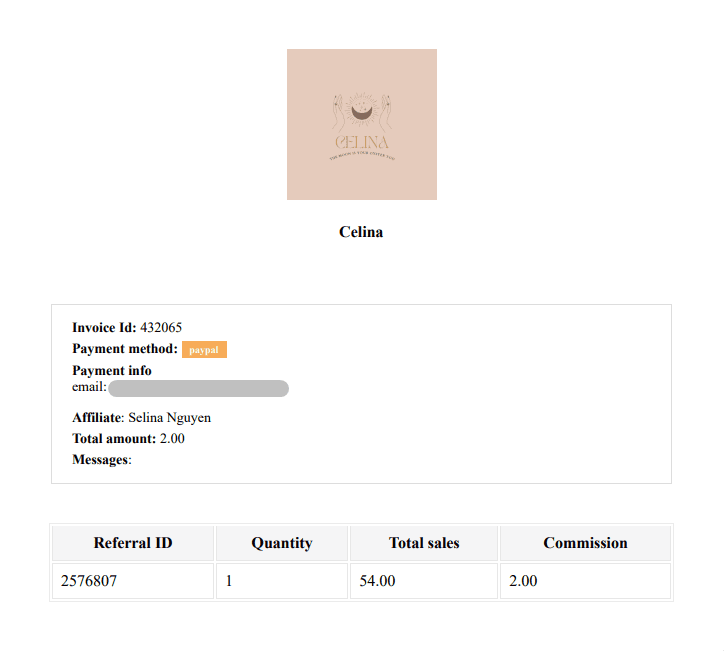
Successful Examples of Avoiding Mistakes in Affiliate Marketing
Affiliate marketing is a great way to grow your brand and boost sales—but only if you do it right and minimize mistakes.
Looking at successful affiliate marketing campaigns is a great way to get inspired. Here are some real-world examples worth exploring:
Holbrook Pickleball

Holbrook Pickleball began as a family-owned business offering top-notch pickleball paddles and gear.
With a well-run affiliate program, the brand saw amazing results:
- 173 new affiliates joined their program.
- Orders from ambassadors went up by 87% by the end of 2023.
- Affiliate revenue grew by an impressive 86% in just one year.
What strategies can you learn from Holbrook to avoid common mistakes in affiliate marketing? Here’s the list:
- Create a simple and easy-to-understand registration page. This helps affiliates sign up smoothly and encourages them to finish the process.
- Make affiliate program terms clear and accessible. Display the terms on the brand’s website so potential affiliates can easily review them before deciding to join.
- Offer a competitive commission rate. Holbrook gives ambassadors 15% store credit for every sale via their code.
- Run monthly sales contests to motivate affiliates. Those who meet sales goals can win prizes like free products or bonuses.
- Host regular online training webinars to engage with affiliates. These webinars provide updates, share best practices, answer questions, and allow ambassadors to connect with the Holbrook team and each other.
- Attend national pickable events to meet new influencers and seek collaboration opportunities to grow its affiliate team.
- Closely monitor affiliate sales and reward top performers. Using UpPromote’s analytics dashboard, Holbrook tracks real-time sales data to identify top affiliates and quickly incentivizes them with gift packages.
TréSkin
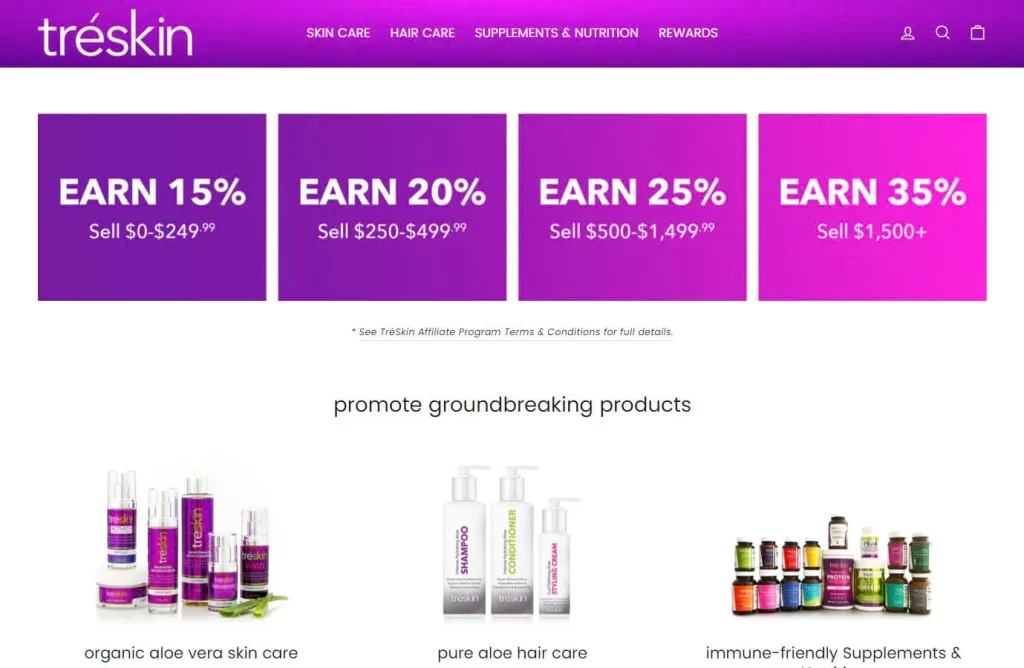
TréSkin, a favorite organic beauty and health brand in the USA, is another successful example of avoiding common mistakes in affiliate marketing.
In just three months of running a campaign through UpPromote, TréSkin generated over $120,000 in affiliate revenue.
Curious how they achieved this? Here’s what they did:
- Create clear and detailed affiliate program terms and display them publicly on their website, making it easy for potential partners to review before joining.
- Design a neat registration form that highlights key program details (like commissions and cookie duration) and only asks for essential information (such as affiliate name and email). This makes it easier for affiliates to sign up and increases the chances they’ll complete the form.
- Introduce attractive tiered commission rates to draw in potential affiliates and motivate existing partners to perform better.
- Use multiple channels to promote the affiliate program and connect with marketers. This includes sharing the offer on social media platforms (Facebook, LinkedIn, Instagram) and showcasing it on UpPromote Marketplace.
- Focus on collaborating with high-quality influencers and bloggers in the beauty niche to maximize reach and impact.
Final Words
Running an affiliate marketing program isn’t just about short—term wins but about building long-term growth. To do that, brands need the right people and tools in place to avoid common mistakes.
When you take the time to set up your program properly and follow best practices for managing it, affiliate marketing can bring in quality leads and steady revenue for your business for years.



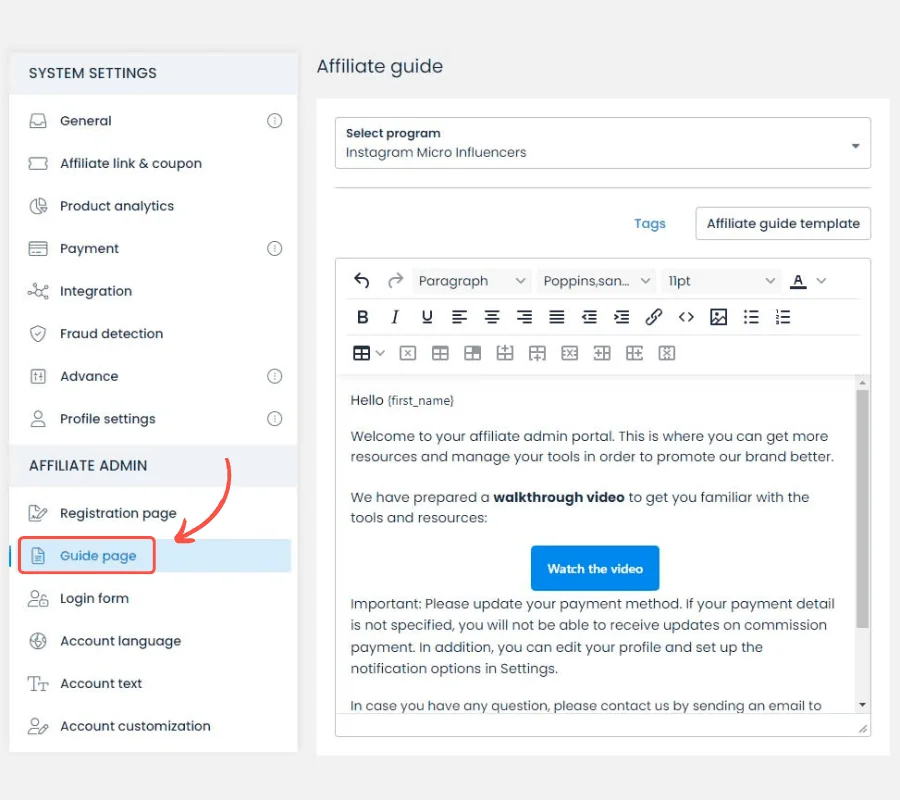 9. Failing to Communicate with Affiliates
9. Failing to Communicate with Affiliates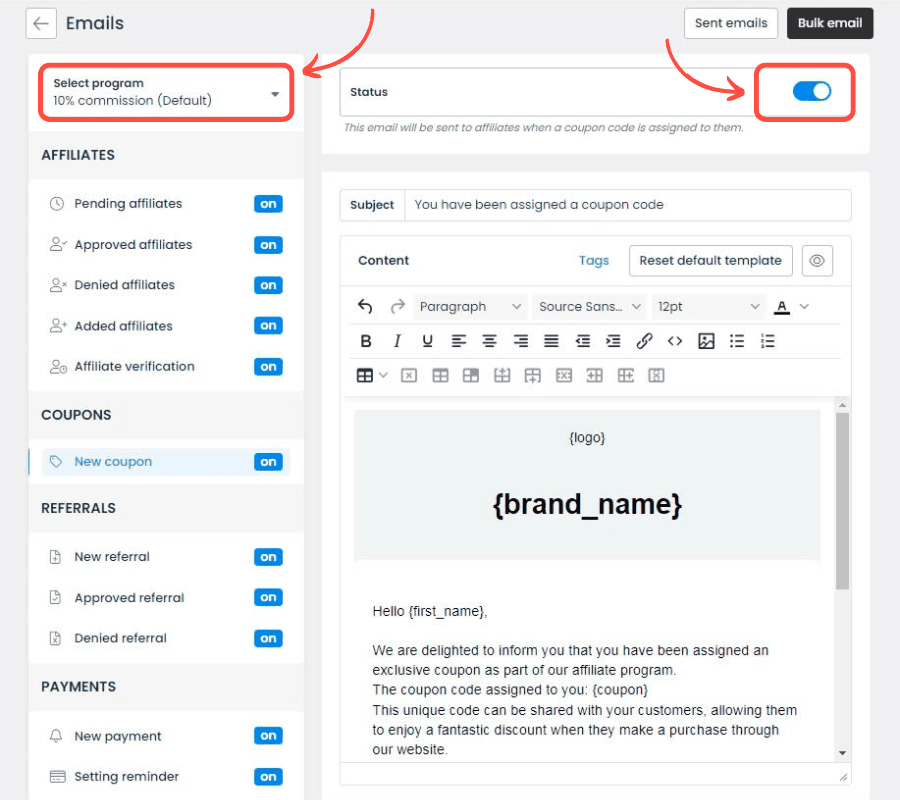 10. Delaying Affiliate Payments
10. Delaying Affiliate Payments

